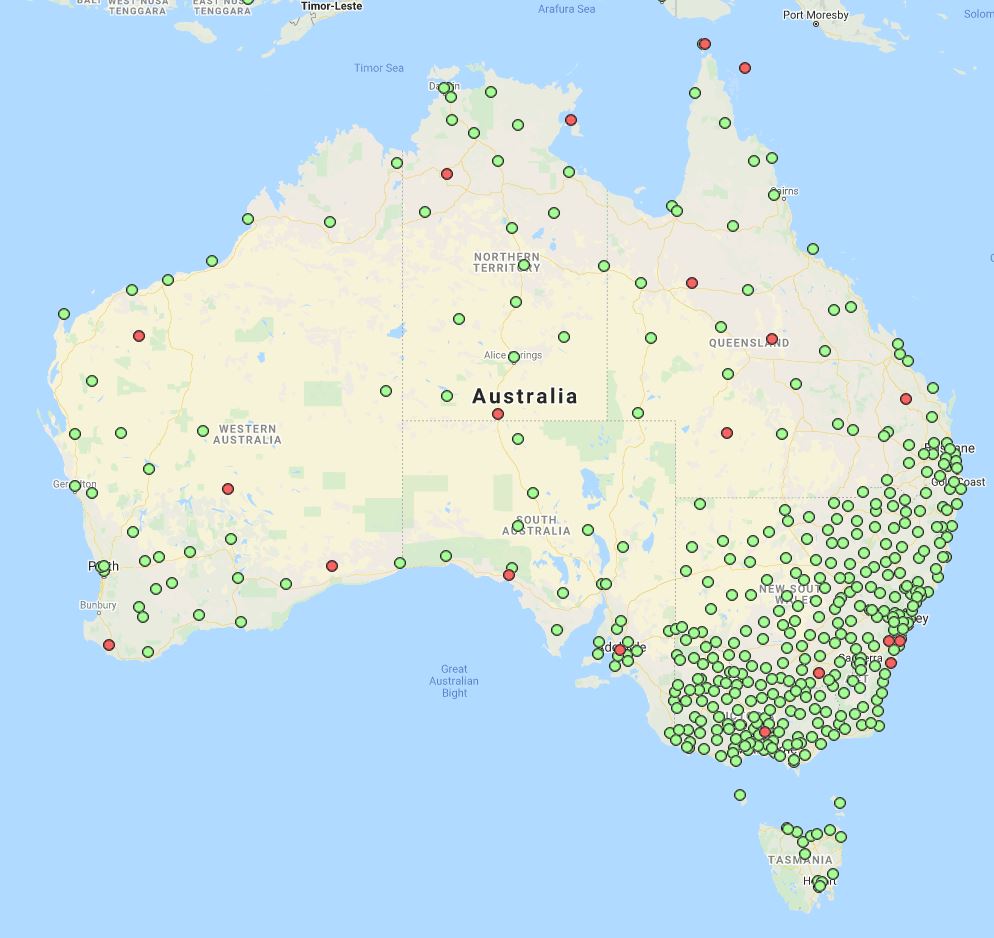As laser and optical technician for close to 15 years now with 9,000+ repairs, calibrations and QA checks under my belt, I’ve seen quite possibly every brand and model of laser on the bench, inside and out.
If you’d asked me 7 years ago which laser level was the hands down best unit I would have had 3 different suggestions – The Japanese built Sokkia’s LP31 a successor to Sokkisha’s rock solid LP3A, The iconic top heavy Spectra Physics LL500 from Dayton, USA or Laser Reference’s L4 out of the modest factory in San Jose in California.
These lasers had three things going for them:
Accuracy: Using proven technology from high-end optical surveying instruments they were hand assembled by skilled technicians to produce some of the most accurate lasers ever built. They had temperature and vibration compensation as standard.
Serviceability: All parts were available. Every screw, prism, piece of glass, and wire was replaceable. Write-offs were rare and the reason that these units are still in service today, 20 years on.
Efficiency: Good design and minimal moving parts meant these laser all clocked over 100 hours on one set of batteries.
So, what happened? To save costs Sokkia stopped manufacture of the LP31 and LP31A shortly after the company was acquired by Topcon, opting for a Topcon’s servo driven solution. Spectra Physics was acquired by Trimble and started manufacturing the LL500 in China, parts were reduced to complete assemblies and the unit lost is serviceability. Like other, similar, industries, we’ve seen an influx of manufacturers coming out of China and parts of Europe where labour is cheap. Two things happened, 1. The big names see an opportunity to increase profits and move manufacturing abroad and 2. Factories re-badge and re-brand the inferior OEM products causing a significant increase in the amount brands available. The laser industry, once filled with a few specialised manufacturing companies is now diluted by 100’s of brands that pollute the hardware stores. $299 specials that lull the consumer with promises of accuracy and reliability when in fact once they take a small tumble, work under extreme heat or even just have frequent random issues become unrepairable and uncalibrateable.
So how do these units look in comparison to the classics of the past, Let’s take a look:
Accuracy: From the old days of laser levels, the accuracy of a Laser has typically increased. highly optimised units have become the standard in today’s market from the market leading brands. With typical accuracy now looking something like 1.5mm @ 30M
Serviceability: Today’s laser brands try to make it easier to repair dropped and broken devices. This is done by having easily order-able spare parts which are visibly coded for repair agencies. They all come with a simple or at-least quite simple calibration technique which trained service staff are able to bring the unit back within calibration range.
Efficiency: With a more digital interface across alot of the new world lasers it means the battery efficiency suffers, more or less most units are 30 Hours run time on a set of batteries.
So where does that leave us? With hundreds of import brands on the market these days it can be overwhelming for a buyer to find what is the right laser from them. What you need to keep in mind when purchasing a laser level is the price of these cheaper units, if you see them at $299 – $599 you can be sure they are handicapped by something. Serviceability is generally the first thing that gets sacrificed, these lasers become throw away items.
Imagine being on site dropping your laser and wanting to get it fixed locally quickly to get back to work. Whelp you can be sure your local service agent is going to struggle to get parts if its even possible to get inside the unit in the first place and you can then be sure the price of repair will heavily outweigh the price of a new unit so you might as well purchase a new unit instead.
The good news about the flooded market these days is there are plenty of good gems in amongst the Chinese rubbish. The following units are my recommendations hearing from on site use and seeing them in for service and calibration.
Laser Levels:
- Bear Polar HV – As far as a home brand laser goes this one is by far the best on the market. Not priced in the sub $500 bracket means its got the 3 main features a laser requires to be a good laser. Accuracy, Serviceability and efficiency. Highly accurate at 2mm @30m, Easy to replace components with the ability to get parts easily, and the efficiency of the Polar HV on batteries is really good as well. 30Hrs on rechargeables and over 40 Hours on alkaline is an excellent return for your money.
- Spectra LL500 – For a manual levelling laser which gives out high level accuracy, dependability and being a rare manual level laser makes the LL500 a dying breed but a needed breed at that. For concreters a Manual Levelling laser is a must, not only does it give off the most accuracy at 1.5mm @30M but it is also a Manual level laser which shuts down if it is knocked, rattled, dropped or moved on site. This aids in saving precious money on over pouring and levelling to wrong levels which can cost thousands. for its rare stature and needed place within the market the LL500 makes this list.
Grade Lasers:
- Spectra GL622N – When it comes to grade lasers there are a few things you need to consider above the previous 3 points. Price, Accuracy in Grade and Rotation Speed. These 3 extra components become very important when using a laser for excavation and civil works. The GL622N comes through these 3 areas with flying colours. Priced excellently you can guarantee that your going to get your money’s worth with this laser. Backed with a 5 year warranty and made by the highly regarded Spectra Precision company you can be sure the components on this laser are easily found, replaced and repaired by any service tech. When it comes to Grade Range and Accuracy in Grade the GL622N Boasts an amazing 25% grade range in both axis’s and a respectable 2mm @30M in grade which is head and shoulders above alot of the competition and especially the most commonly sold Grade Laser the Topcon SV2S which only has an 8% grade Range.
- Geomax Zone60 DG – For a dual grade laser to have a place within the market it needs to be different to its competitors, this is where the Geomax Zone60 DG lives. Even though it only boasts an 8% Dual Grade Range and a 600 RPM speed it has a couple extra features which makes it stand on its own within the market. Beam Catch ability, what is this you may ask? Well let me tell you its something you should be using and once you start using it to get your slop required you will wish you have had it all along. With an Automatic ability to catch your required fall by just pressing 2 buttons takes away trying to manually move the grade of a laser up and down the staff and spamming the remote to try and get it perfect, or even more old school trying to do calculations such as (rise / run = fall). even though its not got the grade range of the GL622N it does have a very affordable price range and a 5 year warranty and a super easy to calibrate setting making the Geomax Zone60 DG have a perfect space in the market carved out for it.
Pipe Lasers:
- Geomax Zeta125 – When it comes to looking at a pipe laser the areas focused on are vastly different to rotating lasers. Battery Life, IP Rating, Price and Distance are the only things that truly matter with these lasers. The Zeta125 has all of these areas covered with plenty of room within the budget saved also. With an accuracy of 1.5mm @ 30M you can be sure your digging your trench, laying your piping or checking your runs with the highest level of accuracy. it can fit into all sized pipes with ease by just adjusting the feet on the laser. an IP Rating of 68 making it submerge proof, this pipe laser has infact been buried in a pipe flooded with water for 3 days, removed from said pipe and tested and it worked perfectly and within its specified accuracy during the construction of the Tanunda Super-loop in South Australia, truly an amazing feat. When it comes down to looking for a pipe laser the Geomax Zeta125 should definitely be considered amongst other pipe lasers.
Hopefully a bit of insight into my life of repairing, calibrating and talking with hundreds of people using these items out in the fields daily gives you a better understanding of what to look out for when purchasing your next laser and this article gives you a basis to work from. Should you have more questions or wish to know some information about any of our other lasers you can always contact our service department and have a chat with me about what you have or looking at getting and i can tell you what i know.

